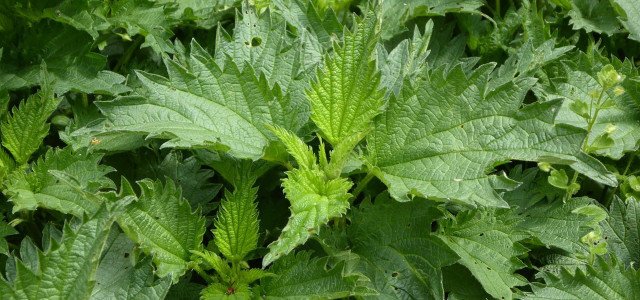
Nettle liquid manure can be used in your garden in many ways: As a biological fertilizer, the broth from nettles strengthens your plants and protects them from pests.
Many hobby gardeners do not want to use chemicals for fertilizing or pest control and instead make their own fertilizers and pesticides. Plant liquid manure has been used as a natural fertilizer for a long time. Nettles are particularly suitable for this purpose in the form of nettle liquid manure. Moreover, stinging nettles are widespread in this country.
Nettle liquid manure: You need these utensils to make it
You don’t need any special extras to make your own pesticide. All the utensils you need to make nettle liquid manure, you probably already have at home:
- fresh nettles
- gloves
- water (for example, collected rainwater)
- a large wooden bucket or pail
- a board to cover the container
- possibly a pair of scissors or a small knife.
Important: The container for the slurry must not be made of metal, otherwise undesirable chemical processes may occur.
Stinging nettle liquid manure preparation
The preparation of stinging nettle liquid manure is quite simple and can be mastered even if you are making plant liquid manure for the first time.
This is how you make stinging nettle liquid manure:
- Collect the nettles. Be sure to wear gloves to avoid the pustules typical of stinging nettles. You can find nettles in the forest, in parks or maybe even in your own garden.
- Cut the nettles with scissors or a knife far down and take them home with you.
- You can use the nettles whole – but if they are very large and bulky, you can still cut them into smaller pieces.
- Put the nettles in the container of your choice and fill it up to the top with water. It is best to cover it with a board so that nothing can fall into it from the outside. Important: Do not close the container airtight – the nettles need oxygen to ferment.
- Stir the liquid manure vigorously once a day. As soon as foam forms, fermentation has begun. After about two to three weeks, the liquid manure turns dark and is ready for use.
Fertilize and protect with nettle liquid manure

Nettle liquid manure is suitable as a fertilizer especially for plants with high nutrient requirements and soils poor in nitrogen. For example, nettle liquid manure is suitable for the following plants:
- Peppers,
- tomatoes,
- potatoes,
- Cucumbers
- Pumpkin
You use the fertilizer every one or two weeks, depending on the condition of the plants, diluting one part of fertilizer with at least ten parts of water. This means, for example, that for one liter of nettle manure there are ten liters of water. For young plantlets, you should use only half a liter of manure for every ten liters of water.
To prevent or control pests such as aphids, you also mix the liquid manure with water in a ratio of one to ten and put it in a spray bottle. Spray the affected plants until the pests have disappeared.
Tip: Nettle liquid manure is best used only on cloudy days. In combination with strong sunlight, it can cause burns on the plants.









